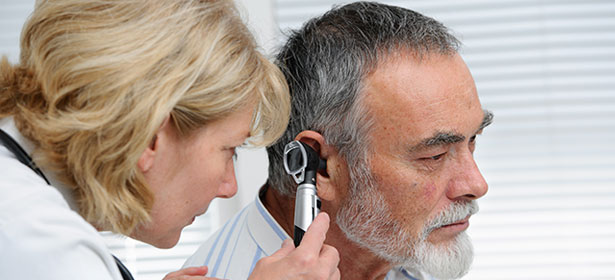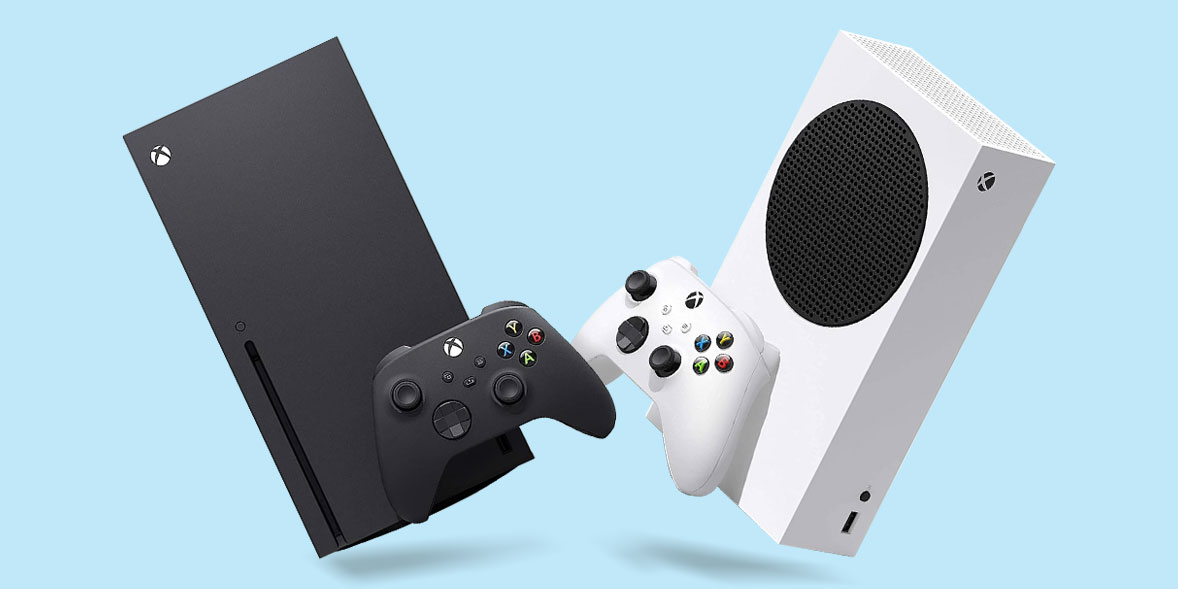
Ear wax removal: safe methods and what to avoid

Ear-wax build up or blockages can be frustrating, and potentially cause further health issues. Many GP surgeries no longer offer removal, so what's the best way to deal with problem ear wax?
If you're unsure what to do, you aren't alone. The Royal National Institute for Deaf People (RNID) has voiced concerns that it's difficult for patients to know which treatments are best because ‘recommendations around [ear] self-care don’t seem to be consistent and are not widely shared’.
A 2022 RNID survey found that 71% of respondents had resorted to attempting to remove ear wax themselves, although two-thirds did not feel confident doing this.
It's best not to wing it, or turn to rogue internet remedies, as this can cause further problems.
We've asked the experts including Kevin Munro, Professor of Audiology at the University of Manchester, to find out which simple home remedies, NHS and private options are available, and the unsafe methods to steer clear of.
Eat well, live better, stay healthy - sign up to our free monthly food and health newsletter for the latest insights delivered straight to your inbox
What is ear wax?

Ear wax is normal and protects your outer ear, helping to stop bacteria and fungi growing, and cleaning and lubricating your ear canal by trapping dirt, dust and hair. Usually, your ears get rid of it naturally.
The only cleaning necessary is to gently wipe inside the 'bowl' of your ear with a damp flannel over a finger, to clean away the wax from the entrance to the ear canal.
You should only need to take further steps if the wax becomes impacted.
What causes wax build-up in ears?
Some people have more issues with ear wax than others, and both age and genetics are factors. As we get older, ear wax tends to get drier and harder to get rid of, potentially blocking the ear canal.
About 2.3 million people in the UK, including hearing-aid users, have troublesome ear wax requiring removal each year, along with around four in ten care-home residents.
Hearing aids can block wax from leaving your ears, as can earbud-style headphones which can push wax further into your ear canal.
When ear-wax removal is needed
If your ear wax is stopping you from hearing well, it needs dealing with.
Impacted wax blocking the ears can also cause earache or pain, ringing or buzzing in your ears (tinnitus), dizziness (vertigo), itchiness or feeling like your ears are full.
Having untreated symptoms of wax build-up can also increase the risk of ear infections.
In severe cases, the hearing loss it causes can lead to anxiety, stress, social isolation and depression.
For hearing-aid wearers, it can also make hearing aids whistle or impact accurate ear mould production, making it harder to get good results.
Best and worst hearing aid providers - see how users rate major providers to help you find the best
How to safely remove ear wax at home

The old maxim – ‘never stick anything smaller than your elbow in your ear’ – has plenty of truth in it.
A 2022 RNID survey found that people are using all sorts of risky methods to remove ear wax, including hairgrips, paperclips and toothpicks.
1 in 10 of those who used DIY methods said their symptoms got worse, or they caused themselves an injury that required medical attention.
So what can you use, and what should you avoid?
Safe home ear-wax treatments – ear drops
Ear drops work by softening the wax. If your ear wax isn’t clearing, try ear drops for 3–5 days initially, unless you’ve got a suspected perforation in your eardrum.
Options include sodium bicarbonate 5% ear drops, hydrogen peroxide, medical-grade olive or almond oil drops. Research on which method is best – or whether water or salt water (saline) works as well – is inconclusive.
The NHS recommends using a dropper while lying your head on one side for a few minutes to let the oil work its way through your ear canal.
You may find it easier to do this first thing in the morning, and again just before you go to sleep.
However, you might find the drops cause their own discomfort, such as making your hearing worse or irritating your ear.
Speak to your pharmacist for more advice on ear drops, and check the NHS guide to ear wax removal.
Best ear plugs - we've tested ear plugs for sleep and more to find the best options
DIY ear-wax removal products to avoid
Cotton buds and small objects

In our recent survey 29% (of 9,019 Which? Connect panel members who remove ear wax from their ears) told us they use cotton buds to remove wax.
If you’re tempted to dig around in your ear with these or other poking devices, such as drills, spades, twiddly gadgets you found online or even your fingers – think again.
This is because they can damage the ear canal and eardrum, cause the wax to be impacted by pushing it further into your ear canal and could even perforate the eardrum.
Ear irrigation at home
Some people manually wash out their ears at home using body-temperature water and a saline solution with a bulb irrigator after using wax-softening drops.
Studies show that rubber bulb irrigation which is low pressure could be worth trying before going to the GP and requesting ear irrigation, and could be successful in around half of cases.
GP surgeries used to offer manual ear syringing using a hand-held metal syringe. However, this method is no longer considered safe for use as it used high pressure water and could damage your hearing.
NICE doesn't recommend syringing because there is a lack of evidence to show it's safe and effective and – because the water pressure isn't controlled – there's a risk of bursting the ear drum.
Ear candling

Ear candles – or Hopi ear candles – are hollow cones made of a fabric tube soaked in beeswax and/or paraffin.
The theory is that the suction created by ear candling pulls wax and debris from your ear when you light the candle and place it in the ear canal.
However, the National Institute for Health and Care Excellence (NICE) says that ear candles will not help to remove ear wax, and could seriously injure your ear.
Ear candling could burn your face or ear – including the eardrum, ear canal or middle ear. It could cause bleeding or even puncture the eardrum.
Weird gadgets you bought on the internet
There's no shortage of intriguing and professional-looking devices online which profess to identify and remove ear wax with ease, but we'd advise against getting carried away with DIY options that aren't proven or advised.
We asked an expert to examine two popular types of ear wax removal gadget bought online, alongside some high street options, and assess the evidence for their effectiveness. He was concerned about the potential risks of a wireless ear camera with ear pick accessories and Spiral earwax removal tool.
He concluded that both could cause damage to the ears and he had serious safety concerns about their use by the public, especially given the the inadequate guidance on safe use.
The clinical evidence says that you should never insert foreign bodies the ear canal as these objects are potentially dangerous and can cause injuries to the ear canal or ear drum.
The verdict: trying out weird and wonderful gadgets from online is likely to be a waste of money, and may do more harm than good. See our dodgy ear wax removal products investigation for the full story.
Best and worst dentists - we reveal the brands customers rate for appointment availability, value and quality of care
Is ear-wax removal treatment still available on the NHS?

NICE recommends that ear-wax removal services should be available at your local GP surgery or a similar community setting. However, ear irrigation is no longer a core service in the standard GP contract, meaning that surgeries can choose whether to offer it or not – and many don’t.
It's a postcode lottery, and the odds are against you – an RNID survey found that 66% of respondents had been told ear-wax removal was no longer available on the NHS.
Hospital Ear, Nose and Throat (ENT) departments in different areas have their own criteria for who they treat, but ear-wax removal is not traditionally done by NHS audiology departments, even for hearing-aid wearers.
Some will treat patients with complex ear conditions, people who have had ear surgery or people with dementia – but many have long waiting lists.
So if home treatment doesn't work, you may well need to consider professional ear-wax removal.
Professional ear-wax removal

There are two main methods of professional ear-wax removal:
- Ear irrigation with an electronic irrigator– this flushes the wax out with water at low pressure: it's much safer and more effective than previous syringing methods because it maintains a set pressure as it pumps the water into your ear.
Some people shouldn’t have ear irrigation, including those with ear conditions such as a perforated eardrum.
- Microsuction – this sucks out the wax. A trained professional uses a microscope or camera to see into your ear while they carry out the procedure.
Before having these treatments, you'll probably be advised to use ear drops for a few days to soften the wax.
The professional removing the wax may also use another form of manual removal, such as a probe, to dislodge any stubborn wax.
Private health: is it worth it? We look at the pros and cons of self-paying for surgery or health care and typical costs
Ear-wax removal – prices compared
Private companies, including larger national chains and independents, offer services to remove ear wax.
This typically costs between £55 and £90, but be aware that some will charge an initial consultation fee of around £30 and some will charge the full £90 fee even if they don't find wax in your ears.
To help you choose and find the best price, we've rounded up the services offered by larger chains and how much they cost.
| BUPA | England, Scotland, Wales | N/A | Yes - £55 (both ears) | No | No |
| Clear Earwax | London - 12 branches | Yes - £35 (if no ear wax removal) | Yes - £80 (one or both ears) | No | Yes - £80 |
| The Hearing Clinic | Herts (2 branches) | N/A | Yes - £88.50 | Yes - £88.50 | No |
| The Hearing Hub | London (3 branches) and Essex (9 branches) | Yes - £25 (examination and consultation only) | Yes - London - £75 (both ears); £65 - Essex | Yes - £85 | Yes - £85 |
| Hearology | London (3 branches) and East Sussex | Yes - £89 for 'ear health consultation' (both ears) | Yes - £89 (both ears) | No | Yes - £129 |
| Hidden Hearing | England, Scotland, Wales | N/A | Yes - prices start £70 (both ears) | No | No |
| Integrate Hearing | Stockport and Manchester | Yes - £30 (if no wax present) | Yes - £55 one ear, £65 two | Yes - £55 one ear, £65 two | No |
The impact of ear wax on hearing aids

It's important to keep on top of ear wax if you wear hearing aids, because the devices can prevent wax from naturally dispersing.
Ear wax can make your aids whistle, affect hearing tests and make it difficult to get an accurate impression of your ear for earmoulds.
If you have private hearing aids, check if initial and/or ongoing wax removal is included in the cost.
For example, if you pay £55 for wax removal at Specsavers prior to having hearing aids fitted, you'll receive a voucher for £55 towards the cost of the hearing aids. However, you'll have to pay privately for ongoing wax removal if it's not for the purpose of fitting new devices.
See our full guide to the big retailers' hearing aid prices to help you compare all levels of hearing-aid care before you buy.
Best fruit and veg boxes - discover which brand is rated highest by customers


















